January 16
What Is a Reverse Flow Smoker?
0 comments
A reverse flow smoker is a barbecue smoker that forces the air to travel further inside the smoker to achieve a more uniform temperature inside the smoker.
How Reverse Flow Works: The heat exits the firebox on the side and travels under a sealed drip pan to the far end of the smoker. As it enters the smoking chamber, it moves through the cooking chamber in the opposite direction, and exits the stack on the firebox end of the smoker.
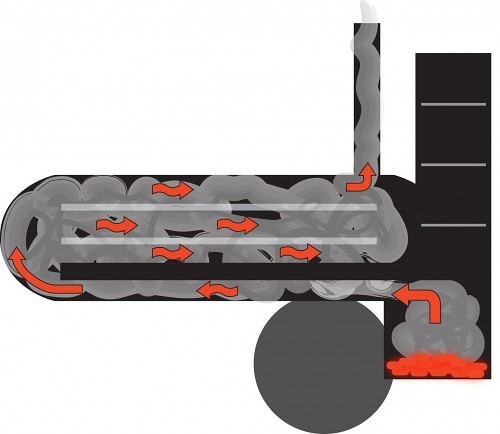
Note: While a cabinet smoker can also be reverse flow, this article addresses only reverse flow offset smokers.
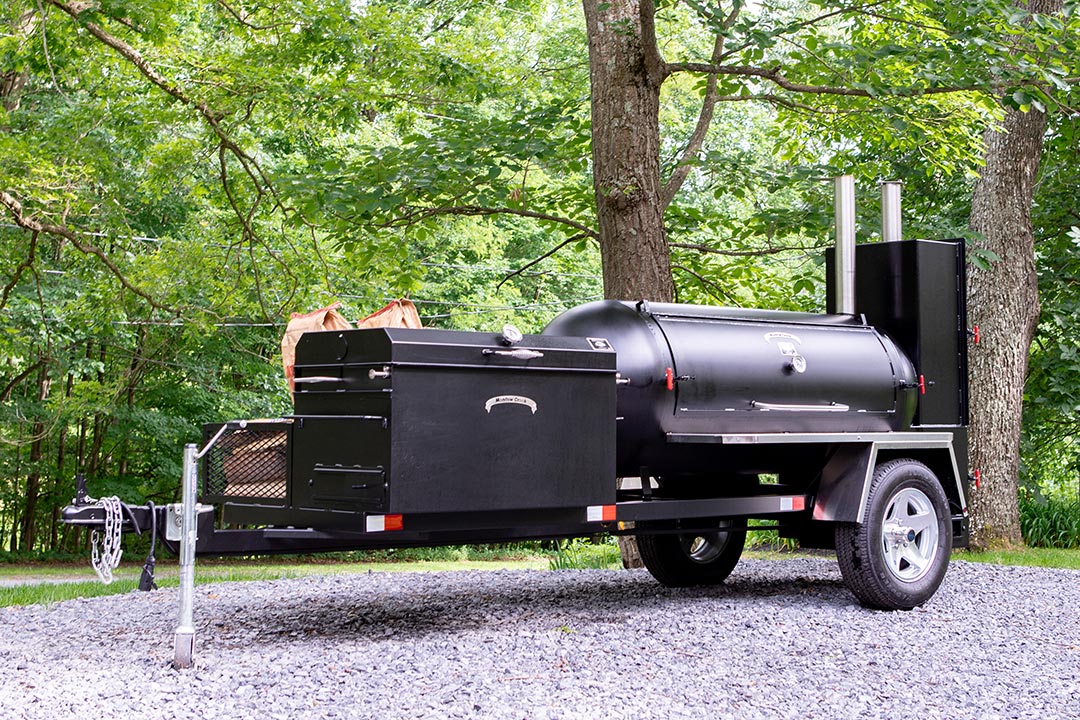
Offset smokers have a firebox on the side and are fueled by charcoal and/or wood. Some pitmasters burn only wood, which they burn down to coals in a separate barrel and shovel into the firebox. The most common method is to build a bed of coals with charcoal and 2-3 log splits and then feed it with more wood every 45-60 minutes.
A traditional offset smoker is set up with smoky heat entering the cooking chamber on one end, traveling across the meat, and exiting the chamber through a stack on the opposite end.
The video below contains a traditional offset smoker. Hit play to start playing it at 13:25 where he turns and moves the meat to help it cook evenly. This doesn't mean the smoker he's using is bad, it's just how how a traditional offset smoker tends to work.
Is a reverse flow smoker better than a traditional offset smoker? One of the keys to better barbecue is consistency. A more consistent temperature throughout the smoker will give you better results with less work.
How important is reverse flow in a smoker? If you're cooking one or two pork butts at a time, you can set them away from the intense heat and occasionally turn the meat if it's getting darker on one side. If you often fill up your smoker with meat, it is a lot less hassle if your smoker has a more uniform temperature from one end to the other. But it ultimately comes down to balancing your budget and how much of a hot spot you're willing to live with.
Is the temperature the same everywhere in a reverse flow smoker? No, but it will definitely be more consistent and the heat will be more indirect than it is in a traditional offset smoker. If you can't live with 25–50 degrees F difference from one end of a 4-foot cooking grate to the other, an offset smoker is not for you.
Having said that, unless you are using forced air or a rotisserie that rotates the meat throughout the entire cooking chamber, I am almost certain that your cooking device has one or more hot spots. Even the best pellet smoker I have cooked on has a hot spot. A hot spot is not necessarily a faulty characteristic, but the result of how radiant heat and natural draft works.
Pro Tip: Instead of looking for an offset smoker that has no variation from one end to the other, learn to use the "hot spot" to your advantage. Cook your chicken, bacon-wrapped peppers, and other foods that you want to cook with higher heat on the rack closest to the firebox, and put your ribs on the top rack or away from the heat source. Learn to keep an eye on the meat, rotate them as needed, and be careful not to overcook anything.
Where is the stack in a reverse flow smoker? A traditional offset smoker will have a stack at the end of the smoking chamber opposite the firebox. A reverse flow smoker has it at the same end as the firebox.
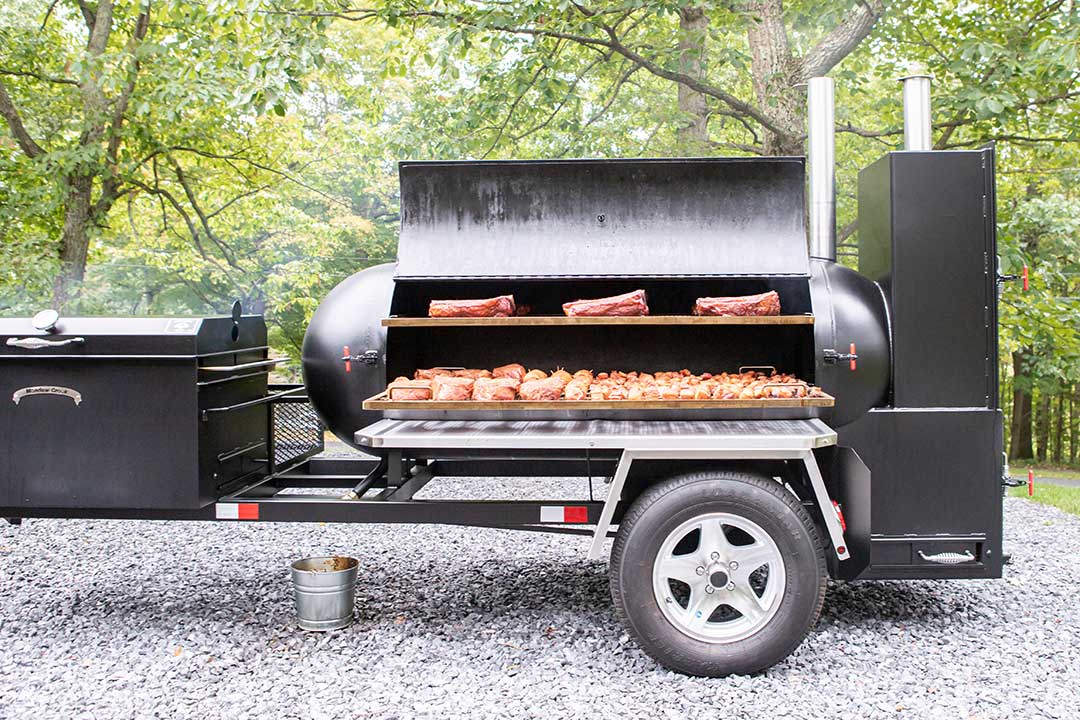
What is the best kind of reverse flow smoker? The best reverse flow smoker is one that meets your expectations and fits your budget. You can get them now at the chain stores for around $500 or you can go with a handmade smoker with a thicker steel construction and stainless steel grates for several thousand dollars and up.
Meadow Creek uses steel that is 2–3 times thicker in the smoker and firebox than what some mass-produced smokers have. Imagine how much easier it will be to maintain a temperature in one of these for a long cook, even in adverse weather, such as a windy day!
Can I grill on an offset or reverse flow smoker? An offset smoker is designed for cooking with indirect heat. Most times we use them for low and slow cooking in the 225–275 degrees F range. They can also be fired hotter for cooking meats faster with indirect heat, but if you're interested in grilling and searing cuts, such as burgers and steaks, with direct heat you'll need a different set up.
You can add a grilling pan to some offset smokers, such as our SQ36 offset smoker and reverse flow tank smokers, to turn them into a direct heat grill.
We build several handmade reverse flow tank smokers, including "Big Black"—a Pitmaster's Dream decked out with stainless steel work shelves, an insulated firebox, a front-mounted charcoal grill, and a trim package.
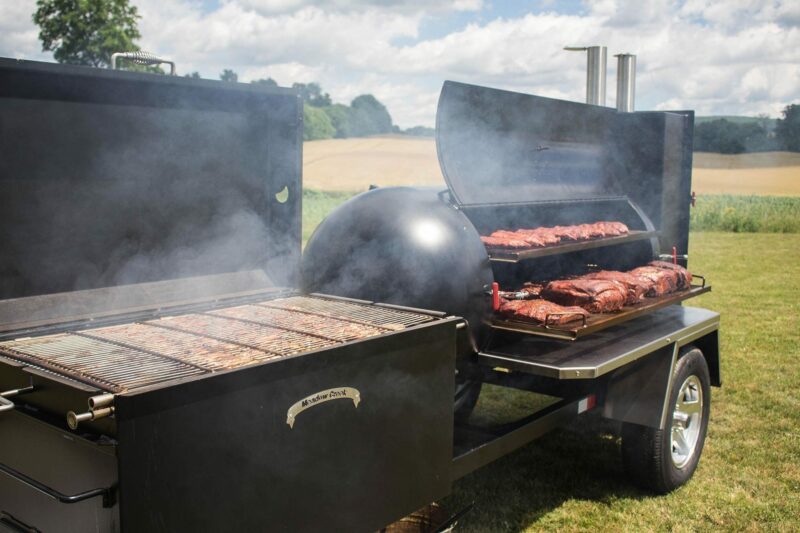
Our tank smokers have a curved end that helps the air move through the smoker. They always come with food-grade stainless steel grates and are built in a culture of integrity.
The TS70P pictured here is our smallest reverse flow smoker and offers 987 square inches of cooking surface.
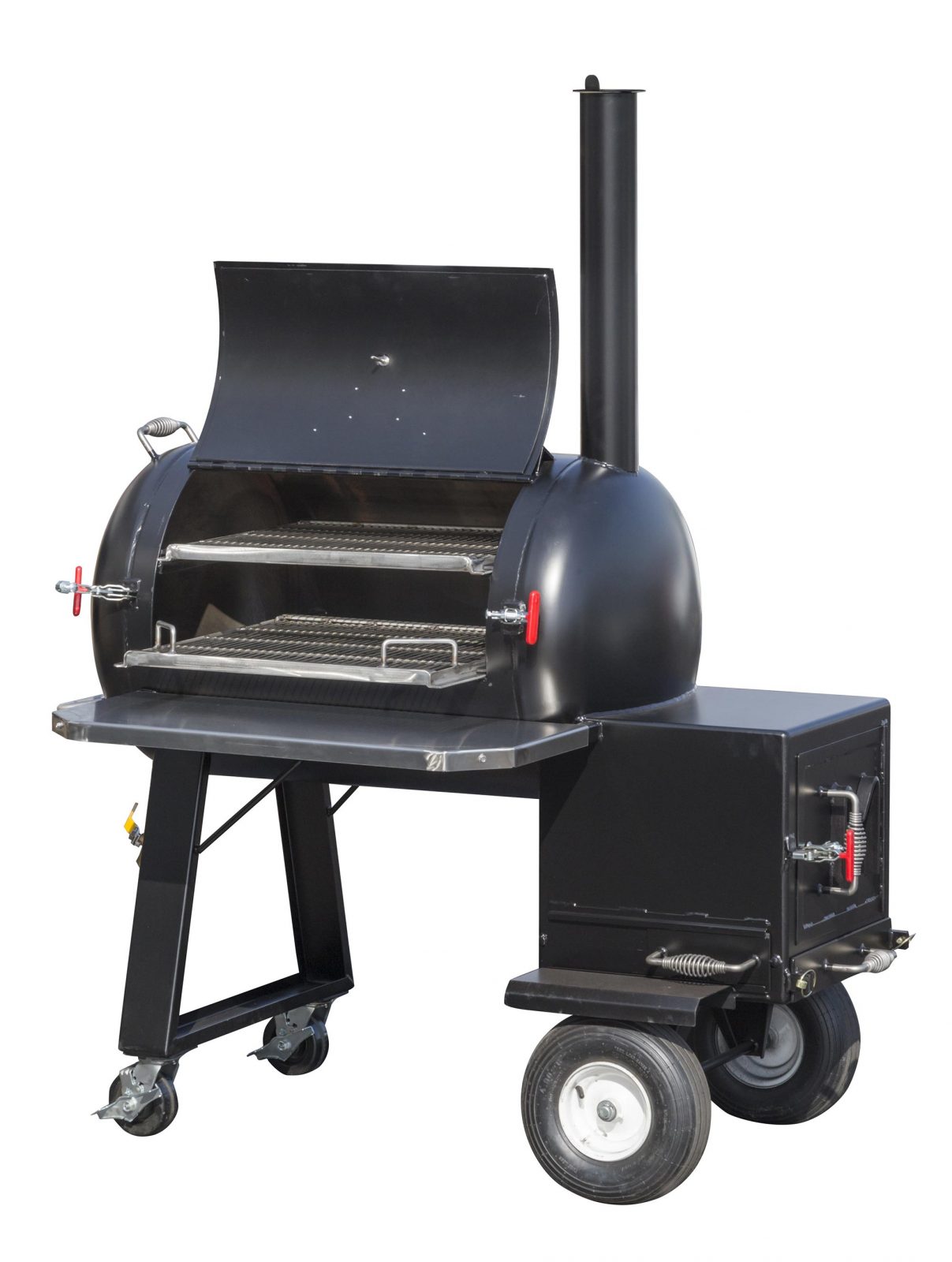
Browse all of our reverse flow smokers in our online catalog with photos, videos, retail prices, and available upgrades here:
Tags
guides, reverse flow smoker, tank smokers